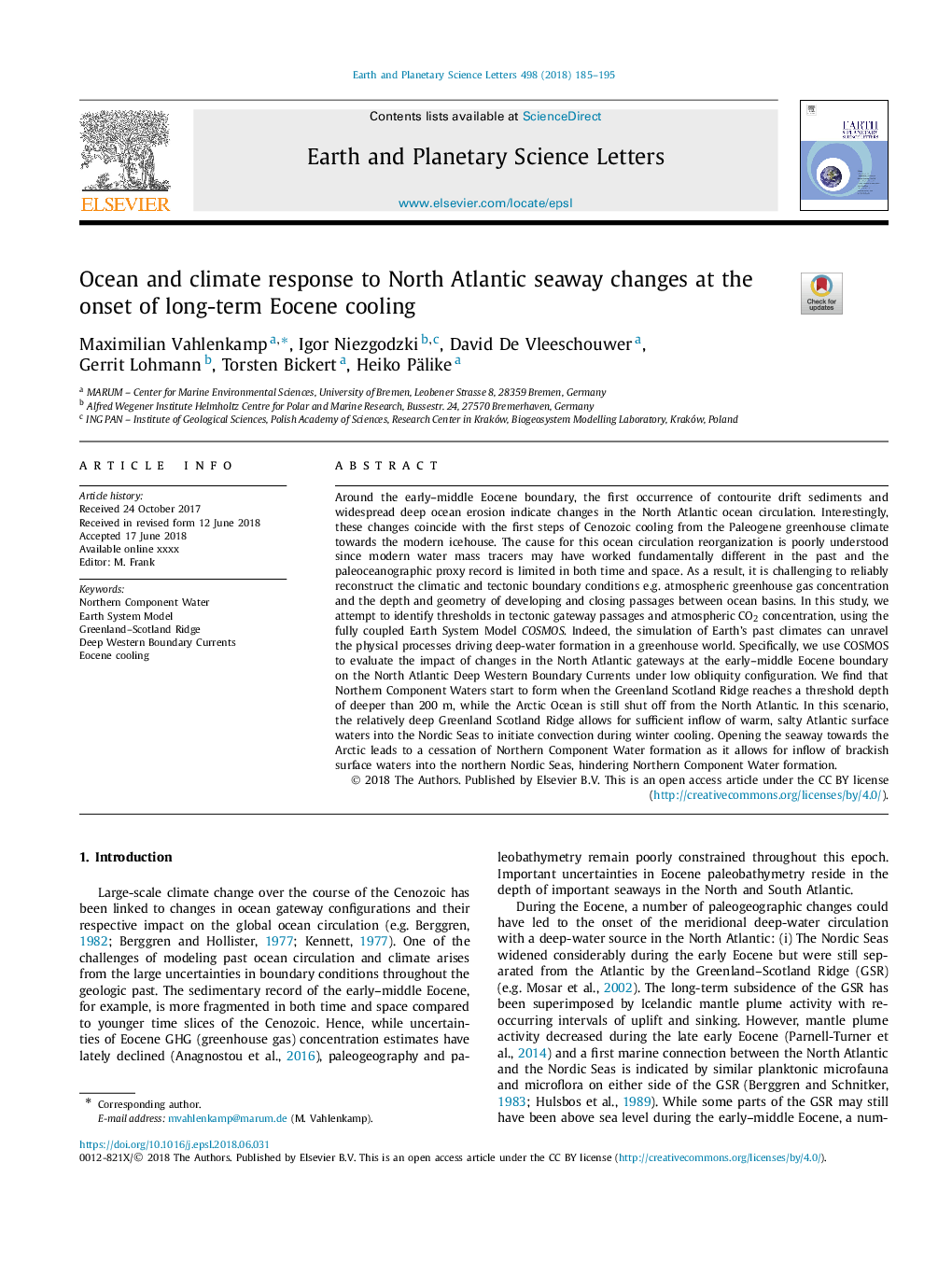| کد مقاله | کد نشریه | سال انتشار | مقاله انگلیسی | نسخه تمام متن |
|---|---|---|---|---|
| 8906716 | 1634658 | 2018 | 11 صفحه PDF | دانلود رایگان |
عنوان انگلیسی مقاله ISI
Ocean and climate response to North Atlantic seaway changes at the onset of long-term Eocene cooling
دانلود مقاله + سفارش ترجمه
دانلود مقاله ISI انگلیسی
رایگان برای ایرانیان
موضوعات مرتبط
مهندسی و علوم پایه
علوم زمین و سیارات
علوم زمین و سیاره ای (عمومی)
پیش نمایش صفحه اول مقاله

چکیده انگلیسی
Around the early-middle Eocene boundary, the first occurrence of contourite drift sediments and widespread deep ocean erosion indicate changes in the North Atlantic ocean circulation. Interestingly, these changes coincide with the first steps of Cenozoic cooling from the Paleogene greenhouse climate towards the modern icehouse. The cause for this ocean circulation reorganization is poorly understood since modern water mass tracers may have worked fundamentally different in the past and the paleoceanographic proxy record is limited in both time and space. As a result, it is challenging to reliably reconstruct the climatic and tectonic boundary conditions e.g. atmospheric greenhouse gas concentration and the depth and geometry of developing and closing passages between ocean basins. In this study, we attempt to identify thresholds in tectonic gateway passages and atmospheric CO2 concentration, using the fully coupled Earth System Model COSMOS. Indeed, the simulation of Earth's past climates can unravel the physical processes driving deep-water formation in a greenhouse world. Specifically, we use COSMOS to evaluate the impact of changes in the North Atlantic gateways at the early-middle Eocene boundary on the North Atlantic Deep Western Boundary Currents under low obliquity configuration. We find that Northern Component Waters start to form when the Greenland Scotland Ridge reaches a threshold depth of deeper than 200 m, while the Arctic Ocean is still shut off from the North Atlantic. In this scenario, the relatively deep Greenland Scotland Ridge allows for sufficient inflow of warm, salty Atlantic surface waters into the Nordic Seas to initiate convection during winter cooling. Opening the seaway towards the Arctic leads to a cessation of Northern Component Water formation as it allows for inflow of brackish surface waters into the northern Nordic Seas, hindering Northern Component Water formation.
ناشر
Database: Elsevier - ScienceDirect (ساینس دایرکت)
Journal: Earth and Planetary Science Letters - Volume 498, 15 September 2018, Pages 185-195
Journal: Earth and Planetary Science Letters - Volume 498, 15 September 2018, Pages 185-195
نویسندگان
Maximilian Vahlenkamp, Igor Niezgodzki, David De Vleeschouwer, Gerrit Lohmann, Torsten Bickert, Heiko Pälike,